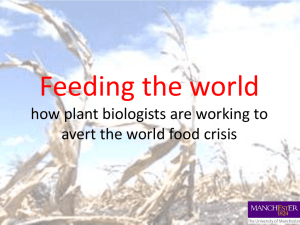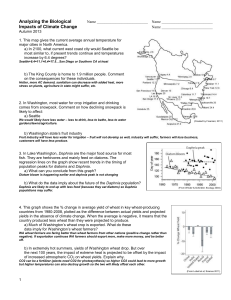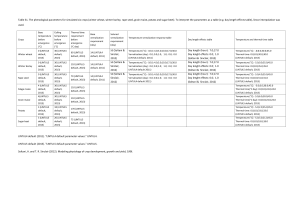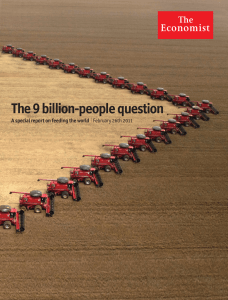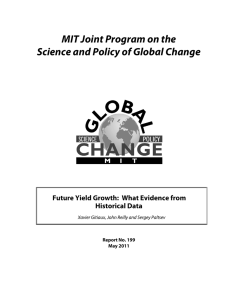Abstract 52 KB - START - SysTem for Analysis Research and Training
advertisement
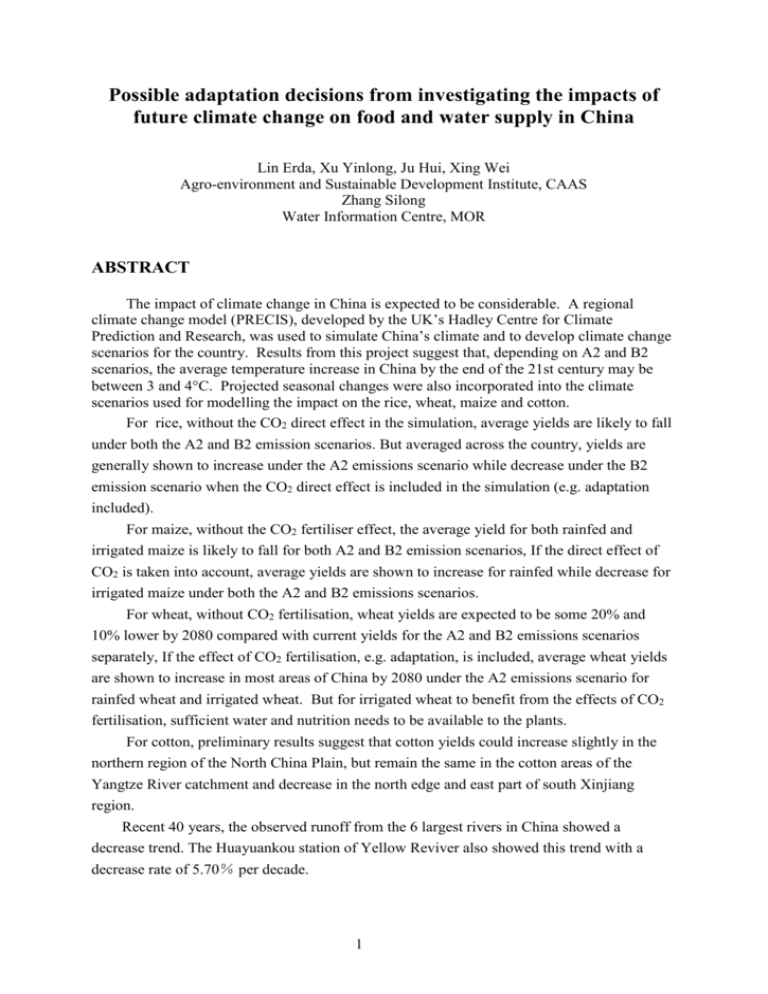
Possible adaptation decisions from investigating the impacts of future climate change on food and water supply in China Lin Erda, Xu Yinlong, Ju Hui, Xing Wei Agro-environment and Sustainable Development Institute, CAAS Zhang Silong Water Information Centre, MOR ABSTRACT The impact of climate change in China is expected to be considerable. A regional climate change model (PRECIS), developed by the UK’s Hadley Centre for Climate Prediction and Research, was used to simulate China’s climate and to develop climate change scenarios for the country. Results from this project suggest that, depending on A2 and B2 scenarios, the average temperature increase in China by the end of the 21st century may be between 3 and 4C. Projected seasonal changes were also incorporated into the climate scenarios used for modelling the impact on the rice, wheat, maize and cotton. For rice, without the CO2 direct effect in the simulation, average yields are likely to fall under both the A2 and B2 emission scenarios. But averaged across the country, yields are generally shown to increase under the A2 emissions scenario while decrease under the B2 emission scenario when the CO2 direct effect is included in the simulation (e.g. adaptation included). For maize, without the CO2 fertiliser effect, the average yield for both rainfed and irrigated maize is likely to fall for both A2 and B2 emission scenarios, If the direct effect of CO2 is taken into account, average yields are shown to increase for rainfed while decrease for irrigated maize under both the A2 and B2 emissions scenarios. For wheat, without CO2 fertilisation, wheat yields are expected to be some 20% and 10% lower by 2080 compared with current yields for the A2 and B2 emissions scenarios separately, If the effect of CO2 fertilisation, e.g. adaptation, is included, average wheat yields are shown to increase in most areas of China by 2080 under the A2 emissions scenario for rainfed wheat and irrigated wheat. But for irrigated wheat to benefit from the effects of CO2 fertilisation, sufficient water and nutrition needs to be available to the plants. For cotton, preliminary results suggest that cotton yields could increase slightly in the northern region of the North China Plain, but remain the same in the cotton areas of the Yangtze River catchment and decrease in the north edge and east part of south Xinjiang region. Recent 40 years, the observed runoff from the 6 largest rivers in China showed a decrease trend. The Huayuankou station of Yellow Reviver also showed this trend with a decrease rate of 5.70% per decade. 1 Results from VIC(variable leakage capacity)Model suggest the average runoff deepness in Ningxia, Gansu, Shaanxi, and Shanxiof of the Yellow River catchment may decrease 2%~10% in 2050s。 In next 50-100 years, climate change will cause more serious water shortage for the yellow river catchment, the decrease rage can reach 20%~40%, it will not palliate the situation of water shortage caused by increased population and quick developed socioeconomy in these areas. Future climate change is almost unavoidable, so adaptation should be the most important to deal with climate change. Following options are possible decisions by Stakeholder as a non-regret strategy: strengthen agriculture substructure, e.g. improving irrigation and drainage systems, continually increase adaptability to climate change and ability to reduce disasters; develop water saving technology, high-efficiency water use technology, and sustainable fertilizer use technology; increase irrigation efficiency from 45% into 60%-70%;develop new high-temperature and pest-resistant crop species through hightech breeding approaches; develop new technologies including biotechnology, helping crops, forests, livestock, fisheries deal with drought, pests and climate variability; adjust crop planting distribution based on the climate patterns, to benefit food supply from getting warmer climate in Northeast China in next 20~30 years; recover vegetation of grassland to avoid further desertification; feeding animal with grass productivity which is influenced by climate change dynamically overcome overgrazing to avoid degeneration of pasture. Assess carrying capacity of water resources based on climate change and water supply; actively adopt water saving technologies to foster production and consumption patterns that are conducive to resource saving and pollution reduction; Major parts of the reform include improving irrigation management efficiency, raising productivity, promoting water-saving and reducing water conflicts among rural users by introducing rural water user associations in more areas; improve the water price system, apply used water and treated sea water, to improve the management of small rural water irrigation facilities, so that more precipitation can be used, can benefit from changed rainfall patterns. 2
